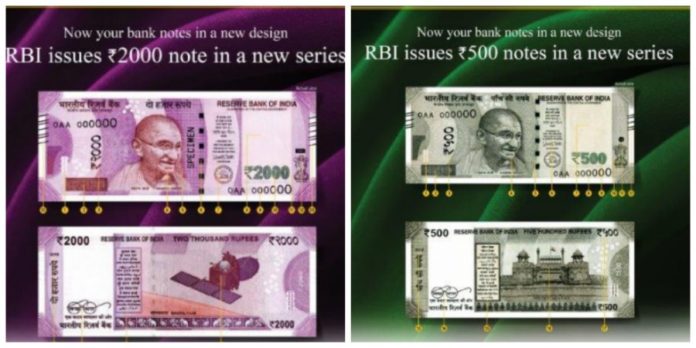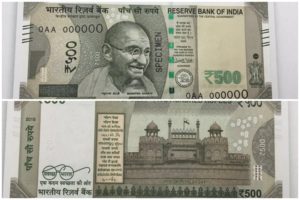Honorable Prime Minister Shri Narendra Modi while addressing the nation on November 8 2016, made a historical announcement that the Rs. 500 and Rs. 1000 currency notes currently in use will no longer be legal tender from midnight 8th November 2016 that is these notes will not be accepted for any kind of transactions from midnight onwards.
- The aim behind such move is to curb corruption, black money, money laundering, terrorism creating an environment of panic.
- However one hundred, fifty, twenty, ten, five, two and one rupee note will remain legal tender and will not be affected by the decision.
- On recommendation of RBI, government of India has decided to issue Rs. 2000 notes and new notes of five hundred for circulation.
How to get the new denomination notes :
Citizens can deposit old notes of Rs. 500 and Rs. 1000 in their bank or post office accounts from 10th November till 30th December 2016 without any limit.
- From 10th November to 24th November the limit of exchange will be Rs. 4000 while from 25th November to 30th December, the limit will be increased.
- For an immediate needs, citizen can go to any bank, head post office or sub post office, with an identity proof like Aadhaar card, voter card, ration card, passport, PAN card or other approved proofs, and exchange old five hundred or thousand rupee notes for new notes.
- ATMs will not work on 9th November and in some places on 10th November also. There will be a limit of Rs. 2000 per day per card in first few days.Later the limit will be raised to 4000.
- If for any reason, any person is not able to deposit the old five hundred or thousand rupee notes by 30th December 2016 they can go to specified offices of the Reserve Bank of India up to 31st March 2017 and deposit the notes after submitting a declaration form.
To reduce the difficulty of the common man, some special steps have been taken by the government. For the first 72 hours till the midnight on 11th November the old notes of Rs. 500 and Rs. 1000 will be accepted at the following places for transaction.
- Government hospitals and pharmacies
- Railway ticket booking counters

- Ticket counters of government buses
- Airline ticket counters
- Petrol, diesel and CNG gas stations
- Consumer co-operative stores
- Milk booths authorised by State governments.
- Crematoria and burial grounds.
Features of New Rs. 500 Note
- The note size is 63mm x 150mm.
- Color is stone grey and
- The new theme is Indian heritage site – Red Fort.
- Ashoka pillar emblem on the right.
- Color of windowed security thread changes from green to blue when it is tilted.
- Devnagari script used for denoting numeral.
- Watermark of electrotype and portrait of mahatma gandhi
- On top left and bottom right side of the note the numerals are increasing from small to big.
- Mahatma Gandhi portrait position shifted to center.
- Governor’s signature, promise clause, Guarantee clause, and emblem of RBI tilted towards right
Back Side of the note depicts
- Year of printing the note appears on left

- Swacchh bharat logo and slogan on bottom left
- Image of red fort with Indian flag
- Denomination value in devanagari on right top.
Features of Rs. 2000 notes
- The Note size is 66mm x 166mm
- Color of the note is Magenta
- Front side of the note depicts:
- Mahatma Gandhi portrait in the center
- Denomination value 2000 in devanagari
- Ashoka pillar emblem on the right.
- On top left and bottom right side of the note the numerals are increasing from small to big.
- Governor’s signature, promise clause, Guarantee clause, and emblem of RBI tilted towards right
- Bharat’, RBI and 2000 inscribed with windowed security thread whose color changes from green to blue when tilted
- Latent image of 2000 can be seen when the note is held at 45 degree angle at the eye level
- When the note is held against light denominational numeral 2000 can be seen through registers.
Reverse side of the note depicts
- Year of printing on the note on left
- Swachh Bharat logo with slogan
- Language panel in the centre
- Image depicting Mangalyan







